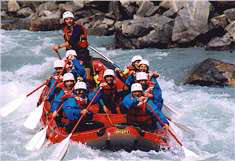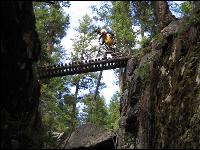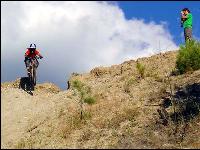The Thompson Region includes the city of Kamloops located in the Thompson River Valley. Terrain varies from semi-arid desert to lush, sweet forests of birch, poplar, spruce and the magnificent ponderosa pine.
North of Kamloops is Wells Gray Provincial Park, a large wilderness park located in British Columbia’s central Cariboo region. The park covers over 5,000 square kilometres and is home to some 219 bird species and more than 50 mammal species.
The park contains numerous small volcanoes and extensive lava flows of the Wells Gray-Clearwater volcanic field. It was then heavily glaciated during the last ice ages. Those forces combined to create rugged valleys cut by impressive waterfalls. The park is now densely forested with conifers and dotted by alpine meadows.
The park is popular year-round with skiers and hikers. Its extensive river and lake system also makes it an ideal paddling destination. With 100 km of coastline, Wells Gray’s Murtle Lake is the largest paddle-only (motor free) lake in North America. The park also borders the shores of Canim Lake.
Helmcken Falls is the park’s main tourist draw. It was one of the major causes for the development of Wells Grey Provincial Park. As a result, if it had not been for the volcanic eruptions within the Wells Gray-Clearwater volcanic field, it is not likely that such a large wilderness region would have been made. The falls are Canada’s fourth highest with a vertical drop of 141 metres. In the winter the falls freeze into a giant ice cone. Known as “the Bookmark”, the ice cone stands taller than a twenty-storey building. Also popular with visitors is Spahats Falls.
Entry points to Wells Gray Provincial Park are via the towns of Clearwater, Blue River and 100 Mile House. The Clearwater River is part if British Columbia's Whitewater Corridor where guided whitewater rafting excursions are avaiable on some of the most powerful and pristine rivers in the British Columbia Interior.










